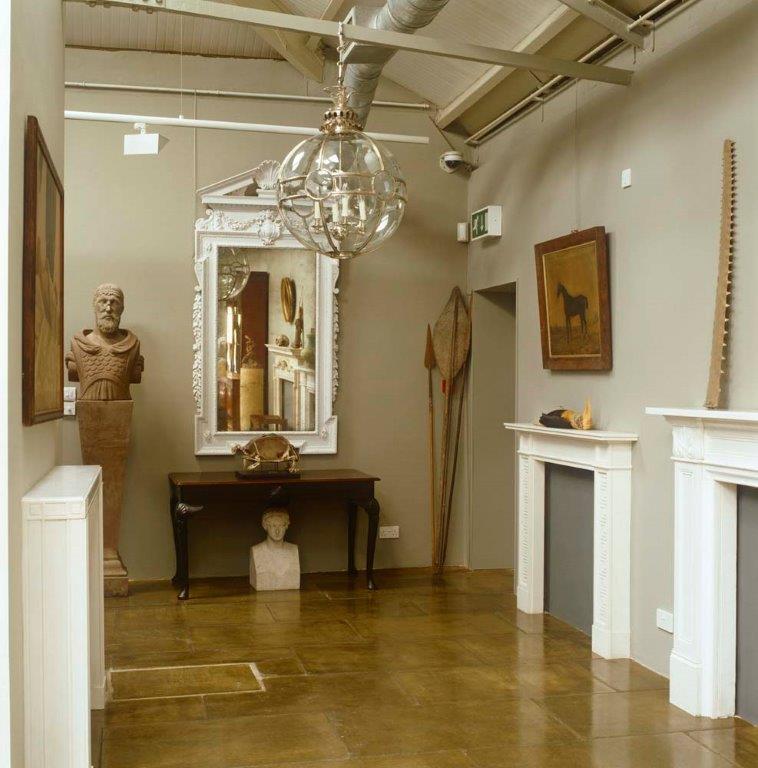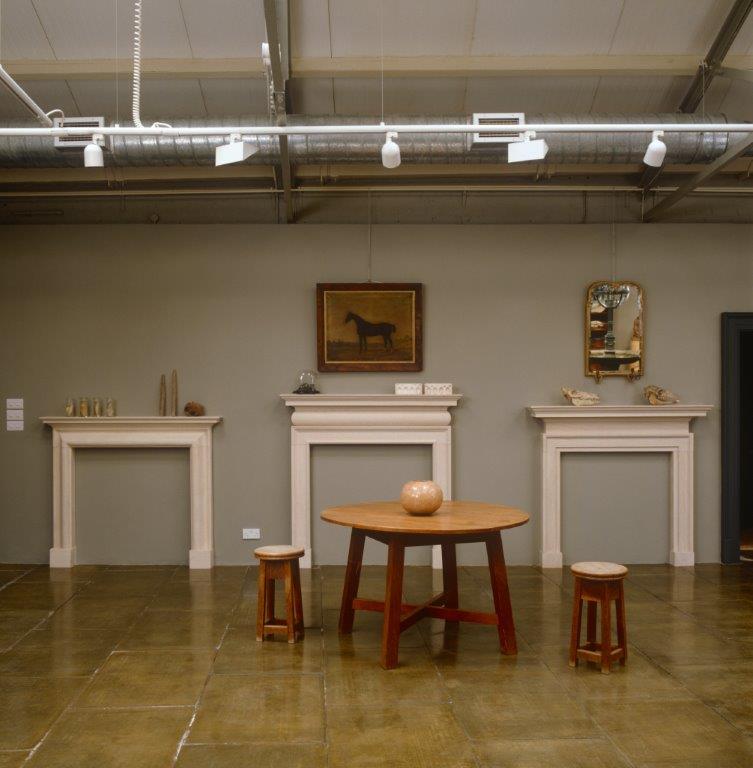I found some old photographs taken by Simon Upton of our old showroom in Dove Walk, that used to be at the back of our current showroom on Pimlico Road. They are beautiful illustrations of our reproduction fireplaces and lighting and when the collection was in its infancy. It is extraordinary to think that we now have around one hundred and twenty reproduction designs for fireplaces and eighty lighting designs.The simplicity of these photos illustrate the timeless quality of our products.
Time to light the fire with Jamb’s reproduction mantels.
1 December 2016

The Langley with the Ovington and the Original globe and the Bucranium mirror above.
All of our reproduction mantels are inspired by antique originals that I have owned. The Langley reproduction fireplace is a fine example of this. The design was created by amending a colossal eight foot Tuscan 17th century chimneypiece I had. By remodelling it, it became anglicised, and proportionally more domestic in its English scale. The Ovington globe lantern hangs to the left to the mantel. One of my favourite lanterns – I love the informal nature of the design and have one myself in the living room of our family home.

The Winchester reproduction fireplace emulates the architectural designs of the influential 18th Century architect James Gibbs. It is extremely graceful and refined. The Dulwich fireplace stands to the right with our Soanian mirror above. We were the first to reproduce Soane chimneypieces. I bought an antique mantelpiece in the manner of Soane and successfully copied it. Then we decided to recreate Soane’s iconic chimneypiece from the drawing room in Lincoln in the Fields – I love the way the detail continues to the side of the legs.

The Pocock, Onslow and Soane fireplaces with our Convex globe lantern in silver.
Few may have heard of Pocock, a little known architect of the early 19th Century. The most magnificent period of architecture – the beginning of modernism, when design became pared down to the essence of the line.

Our Burnley, Rockingham and Montford reproduction fireplaces.
The design roots of the Burnley stem from the mid-17th Century. A simple bolection fireplace made here in Bath stone. In this example, the addition of a compound-moulded shelf increases the stature of the chimneypiece, demonstrating why the great Edwardian architect Edwin Lutyens (1869–1944) favoured this form of fire surround for many of his impressive works. The simple outlines of the Rockingham and the Montford carved in Ancaster stone, mirror the elegant panelling of English Georgian interiors and furniture design of the late 18th Century.

The Montford I hold as one of my favourite designs as I have the original in our dining room in Camberwell. A fireplace from 1740 of pure, clean lines and an over scale shelf, it is the focal point of the room.
Life happens around it and is the first to be decorated for Christmas!



